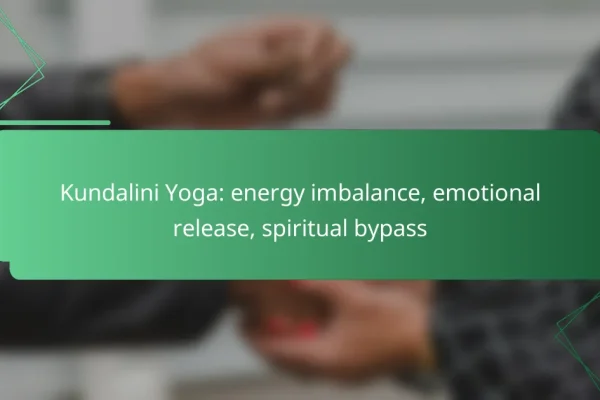What are the risks of popular yoga styles?
Each popular yoga style carries specific risks that practitioners should be aware of to ensure a safe practice. Understanding these risks can help individuals choose the right style for their needs and avoid potential injuries.
Hatha yoga risks
Hatha yoga, while generally gentle, can still pose risks, particularly for beginners or those with existing health issues. Common problems include muscle strains and joint injuries due to improper alignment or overexertion.
To minimize risks, practitioners should focus on proper technique and listen to their bodies. Modifications and props can help accommodate individual needs, especially for those with limited flexibility or strength.
Vinyasa yoga risks
Vinyasa yoga involves dynamic movements that can lead to injuries if not executed correctly. Rapid transitions between poses may increase the risk of falls or strains, particularly for those new to the practice.
It’s essential to maintain awareness of body alignment and to progress at a comfortable pace. Beginners should consider starting with slower-paced classes to build strength and confidence before advancing.
Bikram yoga risks
Bikram yoga is practiced in a heated room, which can lead to dehydration and overheating. Participants may experience dizziness, nausea, or fainting if they do not stay properly hydrated.
To mitigate these risks, drink plenty of water before, during, and after class. It’s also advisable to take breaks as needed and listen to your body, especially if you feel unwell in the heat.
Ashtanga yoga risks
Ashtanga yoga is a rigorous style that can lead to overuse injuries, particularly in the wrists, shoulders, and lower back. The repetitive nature of the sequences may exacerbate existing conditions or lead to new injuries.
Practitioners should prioritize proper warm-ups and consider modifying poses that cause discomfort. Regularly consulting with an experienced instructor can help ensure safe practice and proper alignment.
Yin yoga risks
Yin yoga focuses on deep stretching and can lead to overstretching or joint issues if poses are held for too long without proper awareness. This style requires a balance between relaxation and engagement to avoid injury.
It’s crucial to listen to your body and avoid pushing beyond comfortable limits. Using props can help support the body in poses, allowing for a safer and more effective practice.
How can practitioners mitigate yoga risks?
Practitioners can mitigate yoga risks by taking proactive steps to ensure safety and effectiveness during their practice. This includes seeking guidance from qualified instructors, being attuned to their own bodies, and making necessary modifications to poses.
Consulting with certified instructors
Working with certified yoga instructors is essential for minimizing risks associated with various yoga styles. These professionals can provide personalized guidance, ensuring that practitioners use correct techniques and avoid injuries. Look for instructors who have completed recognized training programs, as they are more likely to understand the nuances of different poses and their potential risks.
Before starting a new style, consider attending a few classes with a certified instructor to familiarize yourself with the specific requirements and adjustments needed for your body type and fitness level.
Listening to your body
Listening to your body is crucial in preventing injuries during yoga practice. Practitioners should pay attention to any discomfort or pain and adjust their practice accordingly. If a pose feels wrong or causes strain, it is important to ease out of it rather than pushing through the discomfort.
Regular self-assessment can help practitioners identify their limits. Use a simple scale from 1 to 10 to gauge discomfort, where 1 is no pain and 10 is unbearable. Aim to practice within a range of 1 to 4 to maintain safety.
Modifying poses
Modifying poses is a practical way to accommodate individual needs and reduce the risk of injury. Many yoga poses can be adjusted using props such as blocks, straps, or bolsters to provide support and enhance alignment. For instance, if a forward bend is too intense, placing hands on blocks can help maintain balance and reduce strain.
Practitioners should not hesitate to modify poses based on their flexibility, strength, and any existing injuries. A good rule of thumb is to prioritize comfort and stability over achieving the perfect pose. Always consult with an instructor for recommended modifications tailored to your specific situation.
What limitations do different yoga styles have?
Different yoga styles come with unique limitations that practitioners should consider. Understanding these constraints can help individuals choose the right style for their needs and avoid potential injuries or frustrations.
Physical limitations of Hatha yoga
Hatha yoga is often seen as a gentle introduction to yoga, but it can still present physical limitations. Beginners may struggle with poses that require strength or balance, leading to frustration or injury. It’s essential to approach Hatha yoga with awareness of your body’s capabilities and to modify poses as needed.
For those with existing physical conditions, certain Hatha poses may exacerbate issues. Consulting with a qualified instructor can help tailor the practice to individual needs and ensure safety.
Flexibility limitations in Vinyasa yoga
Vinyasa yoga emphasizes fluid movement between poses, which can be challenging for those with limited flexibility. Practitioners may find it difficult to transition smoothly, potentially leading to strain or discomfort. It’s advisable to focus on gradual improvement in flexibility rather than pushing too hard.
Incorporating preparatory stretches before a Vinyasa class can help ease into the practice. Using props like blocks can also assist in achieving proper alignment without overstretching.
Heat exposure in Bikram yoga
Bikram yoga is practiced in a heated room, which can pose risks for some individuals. The high temperatures, typically around 40°C (104°F), can lead to dehydration and overheating, especially for beginners or those with certain health conditions. Staying hydrated before, during, and after class is crucial.
It’s recommended to listen to your body and take breaks as needed. If you feel dizzy or unwell, exiting the room for fresh air can help mitigate these effects.
Intensity of Ashtanga yoga
Ashtanga yoga is known for its rigorous and structured sequences, which can be physically demanding. This intensity may not be suitable for everyone, particularly those new to yoga or with physical limitations. Practitioners should be prepared for a challenging workout that requires stamina and strength.
To manage the intensity, consider starting with a modified version of the practice or attending a beginner class. Gradually building strength and endurance can make the practice more enjoyable and sustainable.
Duration challenges in Yin yoga
Yin yoga involves holding poses for extended periods, typically between three to five minutes. This duration can be challenging for those who are not accustomed to stillness or who may experience discomfort in certain positions. It’s essential to approach each pose with patience and mindfulness.
Using props such as bolsters or blankets can provide support and make long holds more comfortable. Practitioners should focus on their breath and allow their bodies to relax into the poses over time.
What are the prerequisites for safe yoga practice?
Safe yoga practice requires individuals to assess their personal health conditions and understand their physical fitness levels. These factors help determine the most suitable yoga styles and modifications to ensure a safe and effective experience.
Assessing personal health conditions
Before starting yoga, it’s crucial to evaluate any existing health conditions, such as chronic illnesses, injuries, or recent surgeries. Individuals should consult with a healthcare provider to identify any limitations or precautions necessary for their practice.
Common health issues that may affect yoga practice include cardiovascular problems, joint issues, and respiratory conditions. Modifications or specific styles, like restorative yoga, may be recommended for those with such concerns.
Understanding physical fitness levels
Recognizing your physical fitness level is essential for selecting appropriate yoga styles. Beginners may benefit from gentler classes, while those with higher fitness levels might explore more challenging styles like Ashtanga or Power Yoga.
It’s helpful to consider factors such as flexibility, strength, and endurance when assessing fitness. A self-assessment or guidance from a qualified instructor can provide insights into which classes will be most beneficial and safe.
How do yoga styles vary by region?
Yoga styles differ significantly by region, influenced by cultural practices, historical contexts, and local preferences. Each area often emphasizes specific techniques and philosophies that resonate with its population.
Yoga in North America
In North America, yoga tends to focus on fitness and wellness, often blending traditional practices with modern exercise trends. Styles such as Vinyasa and Power Yoga are popular, emphasizing dynamic movements and physical intensity.
Many studios offer classes that cater to various skill levels, from beginners to advanced practitioners. It’s common to find specialized classes, such as those for prenatal yoga or yoga for athletes, which reflect the diverse interests of the population.
Yoga in Europe
European yoga styles often incorporate a blend of traditional and contemporary approaches, with a strong emphasis on mindfulness and holistic health. Hatha and Iyengar yoga are widely practiced, focusing on alignment and breath control.
In many European countries, there is a growing trend towards integrating yoga with other wellness practices, such as meditation and nutrition. This holistic approach is evident in retreats and workshops that combine yoga with nature and wellness education, appealing to those seeking a comprehensive lifestyle change.









